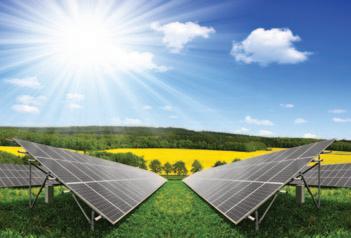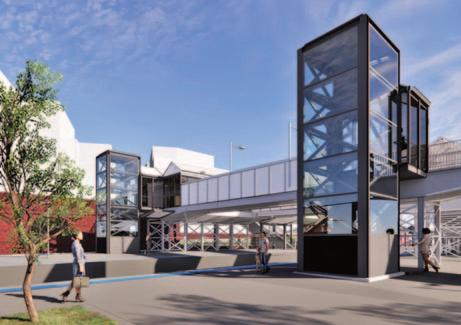
12 minute read
NEWS
NEWS Inner West stations get makeovers
As part of a series of new upgrades in the Inner West, improved accessibility measures have been introduced at a number of train stations.
Advertisement
Following years of campaigning from residents, major works are being undertaken at Erskineville, Petersham and St Peters stations, with a variety of changes made to address community concerns over accessibility.
“People are thrilled that everyone will now be able to use the stations, no matter what their mobility challenges are,” member for Newtown Jenny Leong said. “The changes to accessibility are a credit to the tireless effort of the community writing letters, gathering signatures on petitions and holding actions.”
Among the Petersham station upgrades are new male and female ambulant toilets, a family accessible toilet, CCTV surveillance and a new access ramp from the station entrance to the footbridge. Two new lifts connecting the existing footbridge to the Terminus Street entrance and the station platform have also been installed.
The Erskineville upgrade is a work in progress. Among the fixes: a crossing
and footbridge at Bridge Street, with both a lift and stairs to connect the footbridge to the platforms. St Peters makeover will feature two new lifts, two kiss-and-ride spaces, an accessible parking space and the introduction of two canopies. The station upgrades have been St Peters station welcomed by local residents, said Inner West councillor Liz Atkins — and there are more to come. “Residents are looking forward to the upgrades at Stanmore Station which Transport for NSW are consulting on.” Stanmore station does not currently meet the required standards for the Commonwealth Disability Discrimination Act 1992 and the Disability Standards for Accessible Public Transport 2002. An upgrade is currently in the planning stage.
Housing for All to tackle affordability
In February, City of Sydney council voted to create a Housing for All committee. The move follows sustained calls for more affordable housing in the city (see page 22).
Greens CoS councillor Sylvie Ellsmore said local government had a crucial role to play in solving the issue. “Affordable housing is the responsibility of all levels of government,” Ellsmore said. “The City of Sydney already has a number of strong initiatives to support the growth of social housing and a percentage of affordable housing in new developments. However, the city is not currently on track to deliver against its own targets — let alone meet the calls for stronger action from the community,” she said.
The affordable housing committee will be supported by a working group that will partner with housing advocates, community groups and neighbouring councils.
With the cost of living soaring, Australians are feeling the squeeze more than ever. In the housing market, whether buying or renting, many innercity residents are feeling despondent.
A recent Australian study on the impacts of the COVID pandemic found it had, through the loss of work or education, affected the hope of home ownership for many people.
Member for Newtown Jenny Leong said the current situation made the Housing for All committee all the more vital. “I congratulate the council for establishing this committee and acknowledging the needs of our community when it comes to addressing the housing crisis in our city, which makes it so difficult for many people to pay rent or find housing that they can afford,” Leong said.
Meanwhile, Mission Australia is among a number of charities to have voiced deep concern that the federal government’s budget failed to adequately invest in social housing and affordable homes. “Addressing the magnitude of the need for affordable housing will take much greater investment from the federal government,” said Mission Australia CEO Sharon Callister.
With more than 200,000 people nationwide on the social housing waiting list, Callister added: “The scale of the problem requires national leadership. We need urgent action from the federal government to provide long-term housing solutions that will address our social and affordable home shortfall.”
NEWS Poverty and income inequality increase
Government stimulus packages introduced to cushion the financial impact of COVID in 2020 saw levels of poverty and inequality significantly reduce. However, new research by UNSW Sydney and the Australian Council of Social Services reveals the reduction was short-lived.
By April 2021, both the coronavirus supplement and JobKeeper bonus had been curtailed. When the Delta variant arrived later in the year, there was no longer any COVID support for the one million people unemployed.
When the COVID Disaster Payment was introduced in September 2021, 80 percent of those on the lowest income support payment were excluded. Subsequently, the number of people in poverty rose by around 20 percent and income inequality increased.
A few weeks after lockdowns ended, those still out of paid work lost their COVID Disaster Payment and joined the 1.7 million people on the $45-a-day unemployment JobSeeker allowance. The UNSW report shows that financial stress returned, as did increased reliance on emergency relief.
“The government’s decision to take away the coronavirus supplement and JobKeeper without an adequate substitute, and later, to exclude people on the lowest income support payments from the COVID Disaster Payment and prematurely end that payment, locked more people into poverty,” said Scientia Professor Carla Treloar — director of the UNSW Centre for Social Research in Health.
“Despite remarkable early progress in reducing poverty and income
inequality during the COVID recession, they are both likely to be higher now than before the pandemic,” Treloar said. “That’s the legacy of the policy response to the pandemic.” Meanwhile, ACOSS CEO Dr Cassandra Goldie said the COVID-19 pandemic had taught us that poverty and inequality are not necessarily inevitable. “They grow because government policies allow them to, and in many cases, directly increase them. The income supports introduced during the first COVID wave GOOD SOCIAL POLICY, reduced poverty by half and greatly reduced TACKLING POVERTY, inequality of incomes,” IS GOOD ECONOMICS. she said. “We also showed that good social policy, tackling poverty, is good economics. By targeting income support to those with the least, the vital help was rapidly spent on essentials, helping to keep others in jobs. Our response to COVID-19 showed we can end poverty. And when we do, it’s good for all of us.”
Rally injects politics back into Mardi Gras
Despite the Mardi Gras parade being held once again within the confines of the Sydney Cricket Ground, demonstrators marched down Oxford Street (at right) in protest of religious discrimination and in support of transgender equality and refugee rights.
The old-school rally featured a collection of activist groups including Pride in Protest, Rainbow Rebellion and DIY Rainbow. Speakers included NSW Greens MP David Shoebridge, PiP member Wei Thai-Haynes and Tamil refugee activist Dr Lyngaran Selvaratnam.
“This is how we change the world. The world isn’t changed by a march which has the Commonwealth Bank in it — that’s not how you change the world,” Shoebridge said in reference to the corporatisation of Mardi Gras.
Thai-Haynes warned the queer community not to get complacent over the recent religious discrimination bill win: “The bill is shelved but it is not dead,” she said. “They can bring this back up when [the Coalition] win re-election.” Meanwhile, Selvaratnam delivered an impassioned speech criticising both Liberal and Labor governments for the deportation and mandatory detention of asylum seekers. “We have to hold every one of these bloody politicians to account!” he said.
Following the rally, protesters marched the historic route down Oxford Street towards Hyde Park where the rally culminated with a dance party. (See page 33.)
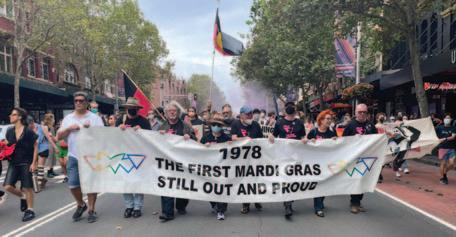
NEWS Call for input on Indigenous cultural centre
Feedback from the Aboriginal and Torres Strait Islander community has been requested by the City of Sydney on how a proposed Aboriginal knowledge and culture centre in Redfern can be best used in the inner city.
A two-storey property at 119 Redfern Street has been bought by the City after the local Aboriginal and Torres Strait Islander community voiced the need for a culturally safe space to practice and share cultures.
The City’s Aboriginal and Torres Strait Islander Advisory Panel has also backed the idea, saying that a “space to gather, share and practice the cultures of Aboriginal and Torres Strait Islander people living in and connected to Sydney” was essential.
Buildings works include a new entry and lift installation, a reception area, two meeting rooms, and two shopfront spaces on the ground floor. The first floor will have a further two rooms, a storeroom and an accessible bathroom. Works are expected to be completed by August this year.
The public consultation period began in March and will close on 9 May. Those who wish to provide community feedback are encouraged to attend a drop-in session or workshop, to be organised by the City.
Creating a local Aboriginal knowledge and culture centre in Redfern is one of the key action areas under the City’s reconciliation plan.
Anti-protest bill passes, Labor in support
A new law has been introduced curbing some forms of peaceful protest. Introduced by the Perrottet government and passed with support from Labor, the bill introduces fines of up to $22,000 and up to two years in prison for anyone blocking major infrastructure — such as roads, ports and rail lines.
To the outrage of human rights organisations, environmental groups and unions, the legislation has been introduced in response to a recent spate of climate protests, such as the Port of Botany blockade. Condemning the climate protests as “guerrilla activity”, opposition leader Chris Minns staunchly backed the bill.
In a statement, transport minister David Elliot said: “We want to see the maximum sentences handed down because this economy cannot continue to have this sort of disruption as we come out of COVID. My message to the protesters is ‘stop being dopes’, you are really doing yourself a disservice.”
Despite attempts by the Greens to weaken the legislation, it passed through the upper house. Greens MP Abigail Boyd said the bill was clearly designed to muzzle protesters with particular views.
“This silencing of political views should cause the attorney-general to be gravely concerned now about the constitutionality of this bill,” she said. Boyd also attacked Labor for waving through the bill, saying the opposition made “plenty of noise about supporting the right to peaceful protest, but it’s clear their solidarity only extends so far”. A string of organisations including the Aboriginal Legal Service, the NSW Council for Civil Liberties, the Human Rights Law Centre and the Environmental Defenders Office condemned the legislation. “The Aboriginal Legal Service was born out of a protest movement in the 1970s. You would be hard pressed to find any win for Aboriginal and Torres Strait Islander peoples’ rights that wasn’t brought about by public protest,” ALS chair Mark Davies said.
“The right to assemble and demonstrate in our streets, towns and cities is a fundamental cornerstone of democracy. For marginalised communities, public protests enable us to be seen and heard, even — and especially — when those in power would rather suppress our voices. We condemn in the strongest terms this government crackdown on our right to protest.” (See page 32.)
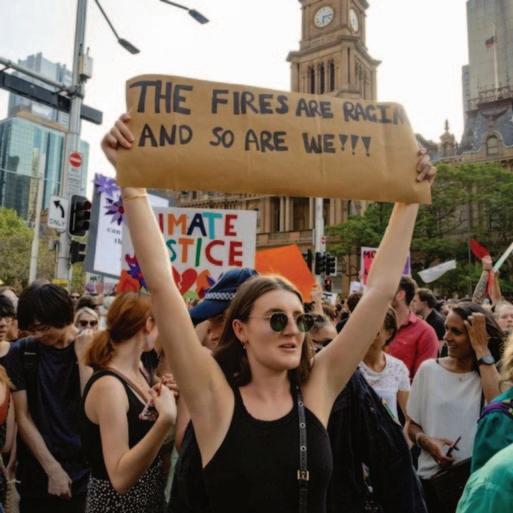
NEWS Surry Hills crisis accommodation opens
The Wesley Edward Eagar Centre in Surry Hills has reopened following an extensive $12m facelift, which included a number of extensive upgrades to help the crisis accommodation centre “gain a greater understanding of each person’s needs”.
Located on Bourke Street, the centre has provided crisis accommodation to countless vulnerable women and men since 1979 and has remained essentially unchanged since the recent works.
The upgrade features significant improvements to the rooms and facilities for clients and staff and includes restoration of the heritagelisted façade and sandstone chapel, dating back to 1847.
Wesley Mission CEO and superintendent Rev Stu Cameron said that the nearly 300 people sleeping rough on Sydney’s inner-city streets every night were at the heart of this innovative project.
“Entrenched homelessness is complex and can involve a combination of mental illness, domestic violence, family breakdown, financial difficulties and the cumulative impact of multiple traumatic events,” he said.
“With client outcomes in mind, the centre has been redesigned to promote individual and group wellbeing. Improved privacy, security and dignity will set a new standard for crisis accommodation in Sydney.”
Award-winning architects Scott Carver created plans for soothing new spaces to significantly improve clients’ experience, replacing smaller basic rooms with larger rooms containing ensuite bathrooms, more personal storage and natural light. Each accommodation floor has a communal kitchenette, laundry and living spaces. A new lift will help improve accessibility, while new offices, counselling rooms and a rooftop terrace with private space for clients and staff contribute to “an empowered, trauma-informed environment”. As part of an $11.7m application, Wesley Mission lodged plans for the upgrade in July 2019. The plans were approved by the City of Sydney with a promise of a further $1m for the project.
Facilities at temporary locations in Ashfield and in the city provided emergency accommodation while the Edward Eagar Centre was closed for the refurbishments.
“In every detail of our refurbished centre, we have made careful choices to communicate the value and worth we see in each person,” said Cameron. “Can a building change the way you feel about yourself? I like to think this one can.”
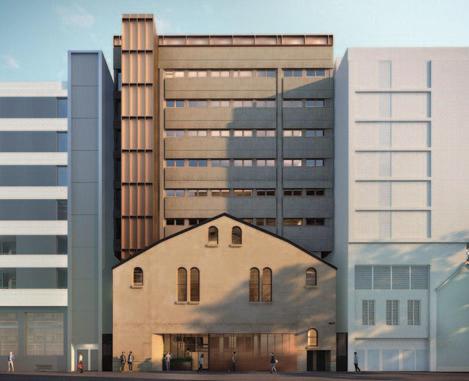
Renewable energy deals for 25 LGAs
Twenty-five LGAs will be powered by renewable electricity from three solar farms after signing a deal with electricity provider Zen Energy. The landmark agreement will deliver over 214 gigawatt hours of electricity a year to councils across NSW.
Sydney lord mayor Clover Moore said it was fantastic to see different councils coming together in the fight against climate change. “It’s wonderful to see so many local government organisations collaborating in order to maximise their efforts to lower global carbon emissions,” she said.
The participating councils are Bayside, Burwood, Campbelltown, Canada Bay, Canterbury-Bankstown, Ku-ring-gai, Georges River, Hornsby, Hunters Hill, Fairfield, Inner West, Lane Cove, Liverpool, Mosman, North Sydney, Parramatta, Port Stephens, Randwick, Ryde, Singleton, Sutherland, Tamworth, Waverly, Willoughby and Woollahra.
“With overwhelming climate research telling us that emissions need to plummet now, these are the energy agreements we need to cut the carbon emissions of local council operations,” said Moore.
The green deal begins this year and runs to 2026, with an option to run to 2030. (See page 31.)
